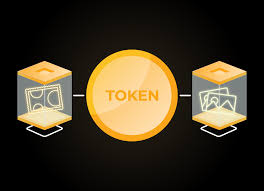Electro Fuels (E-Fuels)
Blog Credit: Trupti Thakur
Image Courtesy: Google
E-fuels are a type of fuel that is produced by capturing carbon emissions and combining them with hydrogen made from renewable or CO2-free electricity. Their examples include e-kerosene, e-methane, and e-methanol.
Why are e-fuels called carbon-neutral fuels?
When e-fuels are burned in an engine, they release carbon dioxide into the atmosphere, but the emissions are balanced by the amount of carbon dioxide removed from the air to make the fuel, making it carbon-neutral.
E-fuels, like e-methane, e-kerosene and e-methanol, are all fuels in gas or liquid form that are produced from renewable (solar or wind power, for example) or decarbonized electricity. This raw material differentiates them from biofuels, which are primarily produced from biomass.
Are Electro-fuels biofuels?
Yes. Electro fuels are fourth-generation biofuels. The third-generation and fourth-generation biofuels use non-arable land. The non-arable lands are those lands that are not suitable for growing agricultural crops. This can be because of rockiness, erosion hazards, steepness, or climate activities.
The third-generation biofuels were made from (marine) algae. The second-generation biofuels were made from grasses (cellulosic ethanol). The first-generation biofuels were made from sugar-based crops, oil-based crops, and starch-based crops.
Why are electro fuels biofuels?
By UNEP, the definition of biofuel is those fuels that are derived from living matter. When electro fuels are derived from carbon emissions, how are they categorised under bio-fuels? The production of electro-fuel bypasses photosynthesis. Also, the production of electro fuel doesn’t need solar energy. Here, the microorganisms act upon carbon dioxide and convert it into fuel. They use electrical energy and chemical compounds like hydrogen to do the conversion.
Why are e-fuels in news?
Germany and Italy are seeking clearer assurances from the European Union that new cars with internal combustion engines running on CO2-neutral fuels can continue to be sold beyond 2035. The EU is proposing to end sales of CO2-emitting cars by that year, making it impossible to sell new fossil fuel-powered cars. The rules do not cover internal combustion engines (ICEs).
Advantages Observed of E-Fuels.
eFuels are environmentally and climate-friendly.
- eFuels allow the global potential of solar and wind power to be unleashed around the world.
- eFuels are produced by using renewable electricity as well as atmospheric CO2 from the air and hydrogen from water.
- eFuels are climate-neutral; no additional greenhouse gases are produced while they are in use.
- eFuels can be easily stored and transported over long distances without any energy loss. They solve one central problem of the energy transition: the inability to feed renewable energy into the grid continuously and thus have it permanently available.
- eFuels emit significantly less nitrogen oxide and particulate matter than conventional fuels.
- eFuels do not cause any disposal or recycling issues.
- eFuels can be used in today’s engines and heating systems and thus allow the sustainable use of existing infrastructure in the transport and heating sectors.
Blog By: Trupti Thakur

14
MarElectro Fuels
Mar 14, 2023Recent Blog
India’s First Creator LandMay 21, 2025
Tokenization – An Initiative By RBIMay 20, 2025
The BioMetric E-PassportsMay 19, 2025
AI HallucinationsMay 16, 2025
India’s Steps Into 6GMay 15, 2025




